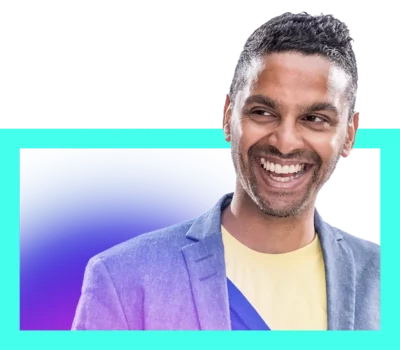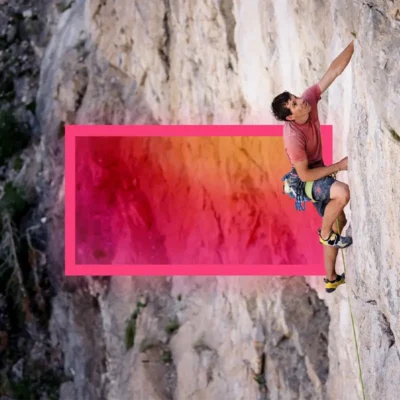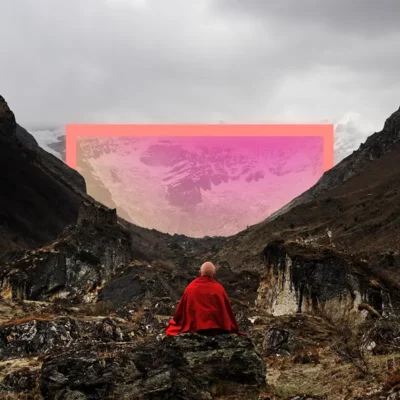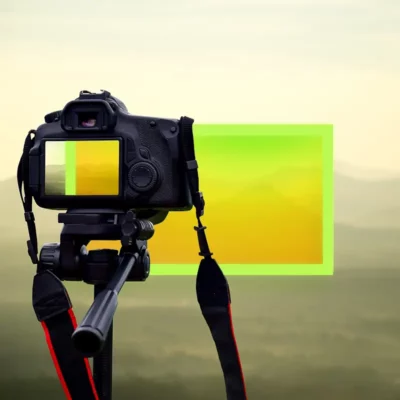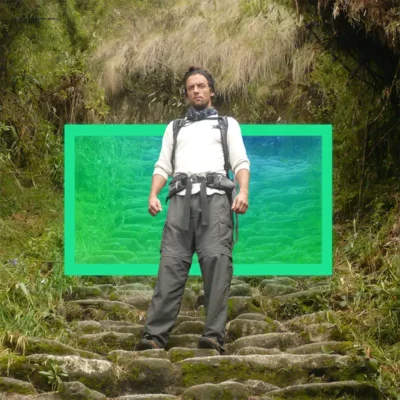I take a breath. I buy myself a moment.
Jacob Sartorius has been making music and short videos since he was a kid. By age 14, he had millions of social media followers who loved his honest, heartfelt content. But on the flip side of that love, he discovered a darker side to his celebrity — one that took him by surprise and threatened his own well-being. Until a simple technique, and a new friend, helped him find a way back to himself, one breath at a time.
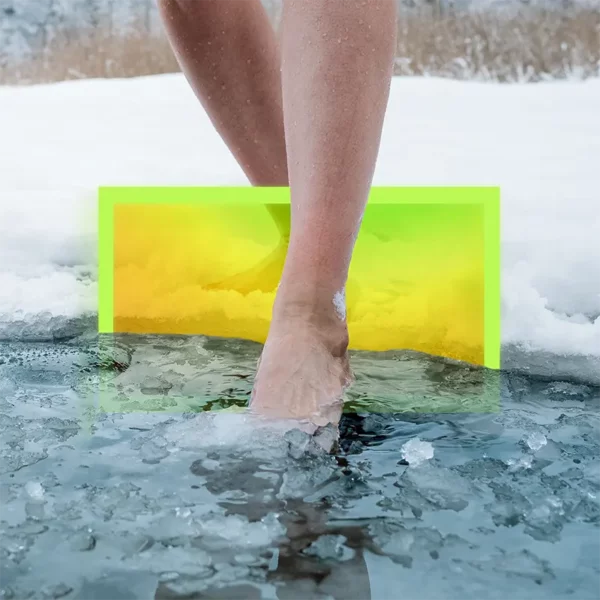

Table of Contents:
Transcript:
I take a breath. I buy myself a moment.
JACOB SARTORIUS: Soon I’m having the reaction I’ll continue to have in the weeks ahead, and then the months ahead. The best way I can explain this feeling is like I’m blasting off in a rocket in my mind to a place where nothing exists but space and time, and I’m just away from everything. Until now the world was so intense that it just consumed me, forcing me to react to one thing or another. Now though, I close my eyes, and I can separate myself from the world in this truly peaceful way.
ROHAN GUNATILLAKE: Do you ever wonder what it’s like to be really famous? As a kid, Jacob Sartorius started making music and short videos about the things that mattered to him: anti-bullying, mental well-being. And by age 14 he was a huge celebrity with millions of followers who loved his honest, heartfelt songs, and videos. But of course, there is a dark side to that level of celebrity too — one that took Jacob by surprise and threatened his own well-being. In today’s Meditative Story, Jacob talks about recognizing that struggle — about how a simple technique, and a new friend, helped him find a way back to himself, one breath at a time.
In this series, we combine immersive first-person stories, breathtaking music, and mindfulness prompts so that we may see our lives reflected back to us in other people’s stories. And that can lead to improvements in our own inner lives.
From WaitWhat, this is Meditative Story. I’m Rohan, and I’ll be your guide.
The body relaxed. The body breathing. Your senses open. Your mind open. Meeting the world.
SARTORIUS: It’s a muggy afternoon. My friend and I head to the fair. The Virginia summer is in full swing: neighbors fire up grills, the drone of distant lawn mowers, screen doors slam. We arrive around 4 — that mellow time when the sun’s chilled out for the day, but it’s still daytime. I’m 14. I’ve been coming to this fair for years. I know the vibe by heart: the cotton candy, the cheesy music, the carnival games (it’s impossible to win), the smell of the grease on those rickety rides, the feeling of the school year finally being over. I’m stoked. My friend and I head up to the booth. We buy our tickets.
We start to explore when these two kids spot me from a distance. I don’t know them, but that doesn’t stop them from walking right over. This is thanks to a strange new chapter I’ve entered in my life. It started a few years ago when I make this little anti-bullying video that goes viral. After that I start making other videos and music. Those go viral, too. Not a little viral but crazy viral.
Life has gotten strange. But the full strangeness won’t surface for another few moments.
As these two fans start walking over, these other kids spot me, too. They are not fans.
Bullies have tormented me for as long as I can remember, and these new kids, I recognize the look in their eyes, the casual meanness. They start making their way toward me from over by the ferris wheel. This familiar wave of dread washes over me. My stomach sinks, like I’m on one of the rickety fair rides. It sinks further as I watch even more kids start coming over, too, with that same expression on their faces. My friend and I start backing up, trying to put distance between us and them.
But the them keeps growing, and suddenly there’s a dozen people coming my way. My friend takes off, I pick up my pace. They’re getting closer, now two dozen of them. Most of them aren’t bullies, they’re just caught up in this weird moment. And when a few of them start to actually run toward me, they all do.
I’m sprinting. Whirling rides and chiming games fly by to my left and right, everything a blur. I’m scanning for an exit. Behind me I hear yelling and laughing and the slap of many sneakers on cement. For a split second I have the thought: This is an actual nightmare. Then I spot an opening in the surrounding fence, and I dash into the surrounding neighborhood.
I’m huffing and puffing, pure adrenaline at this point. Every now and then I glance back — incredibly, there’s like 40 people now. My heart is pounding, I’m out of breath — and that’s when I see one of the bullies is holding something big and gray in his hands. At first I can’t tell what it is, but then I realize: It’s a cinder block. I hear him say he’s going to throw it at me.
Suddenly a flash of black and white rushes into my field of vision. I guess a police car was in the area, because it’s speeding up and driving between me and the stampede, cutting them off. The cop gets out, yells “Get in!” I dive into his backseat, my chest heaving.
For a few minutes I just sit there, looking out the window, trying to get my head around what’s actually just happened. He asks why these people are chasing me, and I realize I don’t even know how to answer that. Suddenly I’m not sure what I do know. One minute I’m an ordinary kid, going to school, riding his bike around, doing kid stuff. The next minute I’m a household name around the world — and some of those households want to throw cinder blocks at me.
How do you make sense of that at any age, much less at 14? The answer is, I don’t.
Life after that day at the fair gets better. In the months and years that follow, I really do get to live my dreams — to make it as a songwriter, and to impact as many people as possible. For as long as I remember, I’ve had this feeling deep down that I’m meant to connect with people. When people send me a note that they’re having a hard time, I tell them I understand, I’ve been there, I got you.
But life after that day at the fair also gets worse. Because being a social media celebrity means you have all these people who love your art, and your words, and your thoughts, and in a certain way they love you. It also means you have other people who actively resent you, and seek out opportunities to publicly express their dislike of everything you do. I basically become a walking, talking Internet comments section, attracting the kindest, most thoughtful supporters and the cruelest, most heartless detractors.
Maybe someone out there could find peace in that insane whirlwind. Not me. I’m not even old enough to see an R-rated movie, and I’m supposed to know how to deal with a daily — no, hourly — barrage of love and hate from millions of people. Making things even more confusing is that so many long for this crazy life I’m leading.
Meanwhile the life I long for is the one I used to lead. On the days when it all feels like too much, I think back to my younger days, when everything was simple and calm. At the top of our long driveway is a basketball hoop, and as a kid I spend hours shooting there. I’ll go out early in the afternoon and stay past dusk, until my mom rings the dinner bell. Sometimes another kid from the neighborhood walks by and joins in. Sometimes I imagine I’m JaVale McGee, from the Wizards. He has big ears like me, so I love him — it’s basically that simple. Everything feels simple.
Simple feels light years away now. Stress, anxiety, depression — these are my new reality. All day I put on the necessary show of being happy and fun, and then night comes around, and often I cry myself to sleep.
One day I wake up from that and, instead of getting out of bed, I just lie there. My brain won’t stop spinning. I pull the covers over my head. Morning turns to afternoon, but I’m only vaguely aware of time. From under my sheets I watch the sun slide down my bedroom wall and then gradually fade into night. I drift off here and there, the line between sleep and awake not even being clear. Sometimes there’s sunlight on my walls, sometimes there’s not. Two days of this, then three, then four. I don’t want to talk to anyone, I don’t want to move. I’ve created a world more intense than I can handle.
Eventually I rally, but not before a scary thought enters my head: “I don’t know what’s left for me and my journey.”
GUNATILLAKE: The journey ahead can be a scary thought for sure. But another way to relate to it is as an invitation to curiosity. We don’t know so much about what will happen next. Can we meet it then with interest, with awareness, with openness? Let’s try that as we move into the next part of the story.
SARTORIUS: I know my life as a social media celebrity isn’t exactly the norm. But what I learn from everyone I meet is that so many people live with some version of this anxiety and overwhelm, even if they don’t get chased by mobs. Life these days is stressful, and so often we respond to that same old choice: fight or flight.
But what if there can be a third option?
One morning I’m talking with my therapist, and an interesting look crosses his face. He asks me a strange question: “Have you ever tried breathing?”
I have been alive nearly two decades at this point. I’ve breathed quite a bit.
But he was talking about a specific kind of breathing — a technique invented by a Dutch guy called the Ice Man. His real name is Wim Hof, my therapist says. He’s this extreme athlete who’s developed a whole therapeutic system of ice baths and a special breathing routine. It was like my therapist was talking about Superman, and he really believed I’d benefit from trying.
To be honest it’s hard to get your hopes up about breathing, but I agree to try it — hey, it’s free. I read up on the steps online, and then I sit or lay down. I close my eyes, try to clear my mind as much as I can. I inhale deeply. And I let it out. I do it again. Let it out. Do it again quickly. Then again, then again.
This might sound nuts, but after just five breaths, I feel my body start relaxing. My shoulders drop a little, my neck relaxes. I follow the air as it flows into my diaphragm, into my belly, into my chest. I let it out. After about 30 breaths, I take a big breath in, and hold after exhalation until I feel the urge to breathe. Now somewhere in there, a kind of reset happens between me and everything else.
I understand for some, going in search of a spiritual advisor, a guru, may just not be right. That’s cool. But I’m short of options and have to try something different. Something that I didn’t necessarily ever see myself doing.
About a year later I’m on a plane to the Netherlands. After years of antidepressants and anti-anxiety medication and probably 10,000 hours of therapy, it’s oxygen that finally has me feeling like myself again. I’ve decided I don’t just need to meet the Ice Man, I need to make a whole documentary about him.
Wim Hof lives outside Amsterdam, in this glassy, sun-filled house, surrounded by lush woods. He’s agreed to let my buddy and I visit him there, and shoot footage for a documentary. I’m determined to share with other folks what I’ve found for myself. For so long, my life is a source of panic and negativity. On cue, I’d find myself at that same miserable intersection: fight or flight, fight or flight. Now, for the first time, I have this third choice: breathing.
Wim Hof turns out to be a real character — gray beard, intense stare, the energy of a seven-year old. Over the course of my visit, we do all these activities together — we jam on drums, we do breathing exercises, we talk. Finally we go out to his porch. It’s winter in Holland, so it’s freezing. I can see my breath. He walks over to this big metal box that looks like it’s got to be a freezer on its side. He lifts the top, it’s full of ice water. He elbows through a layer of ice at the top, then climbs in without flinching. After about 5 minutes looks at me, grinning, making it clear that it’s my turn.
Soon I’m having the reaction I’ll continue to have in the weeks ahead, and then the months ahead. The best way I can explain this feeling is like I’m blasting off in a rocket in my mind, to a place where nothing exists but space and time, and I’m just away from everything. Until now the world was so intense that it just consumed me, forcing me to react to one thing or another. Now, though, I close my eyes, and I can separate from the world in this truly peaceful way.
GUNATILLAKE: Let’s enjoy this with Jacob. There is freedom here. Absorption. Connection. Peace. Which of these qualities can you access right now, however quietly?
SARTORIUS: As for the world itself, it’s never going to stop being challenging. One Friday evening, I’m at the local bowling alley with some friends. I’m back from the Netherlands, and it’s been a long week of working on the documentary. I’m extremely relieved to have a low-key night with my friends. The sounds of pins crashing in the distance, the gleam of the polished lanes, people doing their little dances after a good roll — I’m in my happy place.
Suddenly my nerves tingle, and I sense a shift in the vibe. Some middle schooler a few lanes over has recognized me from afar. He’s walking over. By now I know the difference between a friendly approach and a hostile one. I see the phone in the outstretched arm, the group of friends watching, laughing in the background. He’s coming to mess with me.
But something unusual happens. In the past when a hater gets up in my face and tries to get my goat, well, it works. That primal urge to react kicks right in: My pulse quickens, my anxiety cranks up. You are invading my space, red flag. But now I watch myself do this new thing. I take a breath. Nothing elaborate, just a breath — enough, though, that I buy myself a moment of reflection before reacting. A buffer. Not just between me and phone guy, but between me and the moment.
I watch myself extend my own arm, and offer a friendly handshake.
“Hey man, how’s it going?”
It’s crazy — in an instant, the whole situation shifts. This dude was clearly planning to say something snarky, try to get a video of me snapping at him or something. Instead I respond with love. He’s visibly confused. It’s like he, too, suddenly has a moment of reflection. I watch his face soften.
And I continue.
“So, you here with friends? Awesome, same.”
Reactivity is a chain, and when you break that chain, the effect is dramatic. I watch as the guy sheepishly stuffs his phone in his pocket and instead shakes my hand. That’s it. We make small talk for a moment, then he’s walking back to his group. No video, just a friendly exchange between two strangers in some bowling shoes.
Obviously I’ve become a huge believer in the breathing and the cold therapy. I mean they’ve changed my whole operating system. But it doesn’t matter how you get there. The point is what’s possible when you do. So much of my life has been reacting to my life. By creating that buffer, I’m able to break some of my worst patterns.
Those peaceful days shooting baskets at my house until the dinner bell rang? I’m closer to that now. I feel whole, like I’m wrapped in a warm blanket, knowing deep inside that I’m good, remembering to live right now. Everything else will be or has been. I just need to be here.
Rohan’s closing meditation
GUNATILLAKE: Thank you Jacob, I really enjoyed that. I don’t know much about being a teenage celebrity, but I do know the value of how the breath can bring space to the moment, and sometimes that’s enough to help us reframe what we’re facing. Author and storyteller Jay Shetty’s meditative story, “The art class,” explores his journey of pausing, listening and peeling back the layers of his own story. There’s a link to his episode in our show notes if you’d like to check it out.
While I’m not quite brave enough for the plunging-yourself-into-freezing-cold-water part of Wim Hof’s approach, I really like his breathwork techniques. I’ve not trained in them myself, but they are part of a constellation — a constellation of traditions, modern and classical, in which people have gone deep into the relationship between the breath and body and mind. Using the breath to affect body and mind.
The mindfulness traditions I know tend to take a different approach to Wim Hof. And what I want to do in our short closing meditation together is invite you to try out three breathing techniques that have been particularly important to me at different times.
The first is deceptively simple. When I first got into meditation and started to pay attention to breathing, I noticed that my natural breath was really quite shallow. It only really went in my mouth and nose, to my neck and back again. A teacher of mine at the time asked me to explore if I could breathe beyond my head and into my chest. And then beyond my chest into my belly. So let’s try that together.
And start by knowing what it’s like for the breath to just make it to your neck. A short breath. Wow, doing that now feels actually quite weird for me.
Then allow the breath to be a bit longer, known by the raising and falling of your chest.
And without forcing anything, going beyond the chest and into the belly. The breath long and full. But still gentle.
Play a little with these three different endpoints for the breath: the head, the chest, and the belly. Interested in how they feel, what feels familiar, what feels different.
I remember so clearly that just after a few minutes of breathing into my belly, my body just clicked into it, and it became where my breath wanted to be. So I totally connect with Jacob’s similar experience when guided by his therapist that first time.
The first big insight I remember having about the breath was about letting go of control. The breath is brilliant because while you can control some of it, you can’t control all of it. So I can make it long if I want. But I can’t avoid an inbreath coming after an out breath.
As I start pulling on that thread, the more I made my practice leaving the breath alone. Not trying to do anything with it, not wanting it to be like anything in particular. Just watching it.
And noticing the urge to get involved with the breath, to make it different. And watching that urge too.
It becomes the richest of practices. Attention, awareness, right on the breath. But not getting involved. And when I notice my mind getting involved, seeing the impact of that, and letting it go.
That practice goes some pretty interesting places, and it’s been a good friend.
The third mindfulness technique I want to share is a natural extension of the first. In the first we allow the breath to move beyond the head into the chest and then the belly. What if we let it keep going? What if there is no particular place we know the breath but instead we know it everywhere?
It’s called whole body breathing. And it too can take you places.
Right now for you it might be a clear and strong feeling. Or it might be something you might need to bring some imaginative energy too. Either way is good.
The whole body breathing in. The whole body breathing out. The whole body breathing.
The breath free to work its magic, across the body, across the bodymind.
The whole body breathing in. The whole body breathing out. The whole body breathing.
Thank you Jacob. I so appreciate the realness you brought today.
And thank you Wim for supporting Jacob and all the people you have reached. Hey I might even go for a cold swim one day, who knows?
And thank you. You’re doing great.
Go well.

